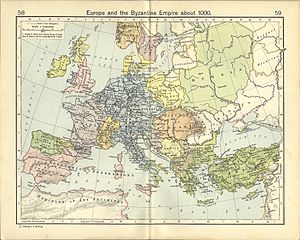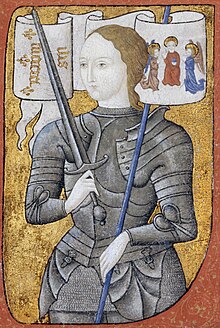
Marriage, also called matrimony or wedlock, is a culturally and often legally recognized union between people called spouses. It establishes rights and obligations between them, as well as between them and their children, and between them and their in-laws. It is nearly a cultural universal, but the definition of marriage varies between cultures and religions, and over time. Typically, it is an institution in which interpersonal relationships, usually sexual, are acknowledged or sanctioned. In some cultures, marriage is recommended or considered to be compulsory before pursuing any sexual activity. A marriage ceremony is called a wedding.
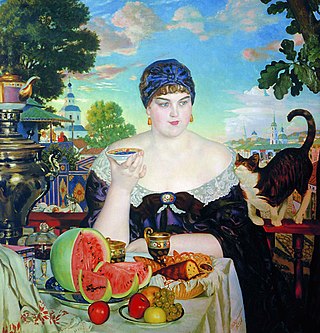
A wife is a woman in a marital relationship. A woman who has separated from her partner continues to be a wife until their marriage is legally dissolved with a divorce judgment. On the death of her partner, a wife is referred to as a widow. The rights and obligations of a wife to her partner and her status in the community and law vary between cultures and have varied over time.

A brothel, bordello, ranch, or whorehouse is a place where people engage in sexual activity with prostitutes. However, for legal or cultural reasons, establishments often describe themselves as massage parlors, bars, strip clubs, body rub parlours, studios, or by some other description. Sex work in a brothel is considered safer than street prostitution.

The legal rights of women refers to the social and human rights of women. One of the first women's rights declarations was the Declaration of Sentiments. The dependent position of women in early law is proved by the evidence of most ancient systems.
Prostitution in Greece is legal at the age of 18, and regulated. It is estimated that fewer than 1,000 women are legally employed as prostitutes and approximately 20,000 women, half of whom are of foreign origin and the other half are Greek, are engaged in illegal prostitution. Many women affected by the economic crisis have turned to prostitution through poverty.
Prostitution in Turkey is legal and regulated. The secularization of Turkish society allowed prostitution to achieve legal status during the early 20th century. Known as "general houses" (genelevler) in the country, brothels must receive permits from the government to operate. In turn, the regulatory agencies issue identity cards to sex workers that give them rights to some free medical care and other social services. However, many local governments now have a policy of not issuing new registrations, and in some cities, such as Ankara and Bursa, brothels have been demolished by court order.
Prostitution in Singapore in itself is not illegal, but various prostitution-related activities are criminalized. This includes public solicitation, living on the earnings of a prostitute and maintaining a brothel. In practice, police unofficially tolerate and monitor a limited number of brothels. Prostitutes in such establishments are required to undergo periodic health checks and must carry a health card.

Prostitution is the business or practice of engaging in sexual activity in exchange for payment. The definition of "sexual activity" varies, and is often defined as an activity requiring physical contact with the customer. The requirement of physical contact also creates the risk of transferring diseases. Prostitution is sometimes described as sexual services, commercial sex or, colloquially, hooking. It is sometimes referred to euphemistically as "the world's oldest profession" in the English-speaking world. A person who works in this field is called a prostitute, and sometimes a sex worker, but the words hooker and whore are also sometimes used to describe those who work as prostitutes.

Prostitution in Vietnam is illegal and considered a serious crime. Nonetheless, Vietnam's Ministry of Labour, Invalids and Social Affairs (MOLISA) has estimated that there were 71,936 prostitutes in the country in 2013. Other estimates puts the number at up to 200,000.

Women in the Democratic Republic of the Congo have not attained a position of full equality with men, with their struggle continuing to this day. Although the Mobutu regime paid lip service to the important role of women in society, and although women enjoy some legal rights, custom and legal constraints still limit their opportunities.
Prostitution in Egypt is illegal. The Egyptian National Police officially combats prostitution but, like almost all other countries, prostitution exists in Egypt. UNAIDS estimate there to be 23,000 prostitutes in the country, including Egyptians, West African and Eastern Europeans.
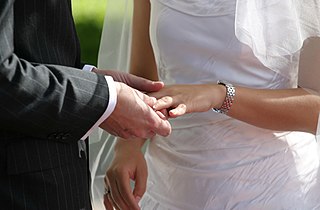
Sex and gender roles in the Roman Catholic Church have been the subject of both intrigue and controversy throughout the Church's history. The cultural influence of the Catholic Church has been vast, particularly upon Western society. Christian concepts, introduced into evangelized societies worldwide by the Church, had a significant impact on established cultural views of sex and gender roles. Human sacrifice, slavery, infanticide and polygamy practiced by cultures such as those of the Roman Empire, Europe, Latin America and parts of Africa came to an end through Church evangelization efforts. Historians note that Catholic missionaries, popes and religious were among the leaders in campaigns against slavery, an institution that has existed in almost every culture and often included sexual slavery of women. Christianity affected the status of women in evangelized cultures like the Roman Empire by condemning infanticide, divorce, incest, polygamy and marital infidelity of both men and women. Some critics say the Church and teachings by St. Paul, the Church Fathers, and scholastic theologians perpetuated a notion that female inferiority was divinely ordained, while current Church teaching considers women and men to be equal, different, and complementary.

Prostitution has been practiced throughout ancient and modern cultures. Prostitution has been described as "the world's oldest profession," although the oldest professions are most likely farmers, hunters, and shepherds.

Women in the Middle Ages in Europe occupied a number of different social roles. Women held the positions of wife, mother, peasant, artisan, and nun, as well as some important leadership roles, such as abbess or queen regnant. The very concept of women changed in a number of ways during the Middle Ages, and several forces influenced women's roles during this period, while also expanding upon their traditional roles in society and the economy. Whether or not they were powerful or stayed back to take care of their homes, they still played an important role in society whether they were saints, nobles, peasants, or nuns. Due to context from recent years leading to the reconceptualization of women during this time period, many of their roles were overshadowed by the work of men. Although it is prevalent that women participated in church and helping at home, they did much more to influence the Middle Ages.

An alewife, also brewess or brewster, was a woman who brewed ale for commercial sale. Women have been active in brewing since before the process's industrialisation.
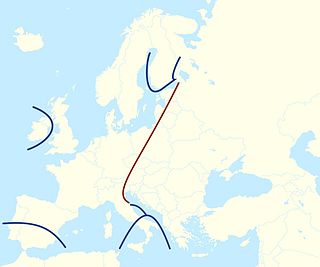
The Western European marriage pattern is a family and demographic pattern that is marked by comparatively late marriage, especially for women, with a generally small age difference between the spouses, a significant proportion of women who remain unmarried, and the establishment of a neolocal household after the couple has married. In 1965, John Hajnal posited that Europe could be divided into two areas characterized by a different patterns of nuptiality. To the west of the line, which extends approximately between Saint Petersburg, Russia, and Trieste, Italy, marriage rates and thus fertility were comparatively low and a significant minority of women married late or remained single and most families were nuclear; to the east of the line and in the Mediterranean and particular regions of Northwestern Europe, early marriage and extended family homes were the norm and high fertility was countered by high mortality.
Medieval female sexuality is the collection of sexual and sensual characteristics identified in a woman from the Middle Ages. Like a modern woman, a medieval woman's sexuality included many different aspects. Sexuality does not only refer to a woman's sexual activity, as sexual lives were as social, cultural, legal, and religious as they were personal.

Sybil Neville-Rolfe OBE was a social hygienist and founder of the Eugenics Society, and a leading figure in the National Council for Combating Venereal Diseases. She has been described as a feminist and a eugenicist.

Prostitution in Francoist Spain (1936–1975) presented the government with a problem. The Nationalist faction in the Spanish Civil War (1936–1939) tolerated the practice, but prostitution was actively opposed by the Catholic Church. During the 1940s, state policy was more tolerant of it, and allowed officially sanctioned brothels to serve the "needs" of men and prevent the spread of sexually transmitted infections (STIs). However, clandestine prostitution was actively suppressed, while its economic causes, which largely involved war orphans and women in dire economic situations, were ignored.

The situation of women in the Byzantine Empire is a subject of scientific research that encompasses all available information about women, their environments, their networks, their legal status, etc., in the Byzantine Empire.


